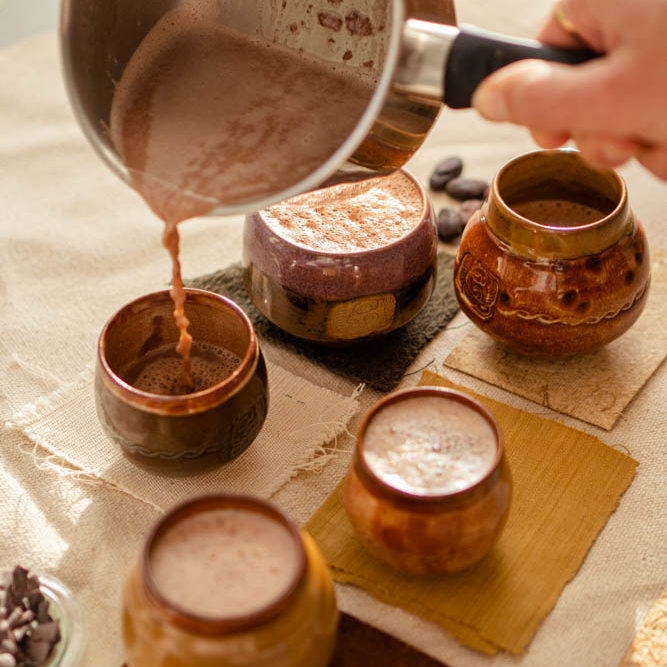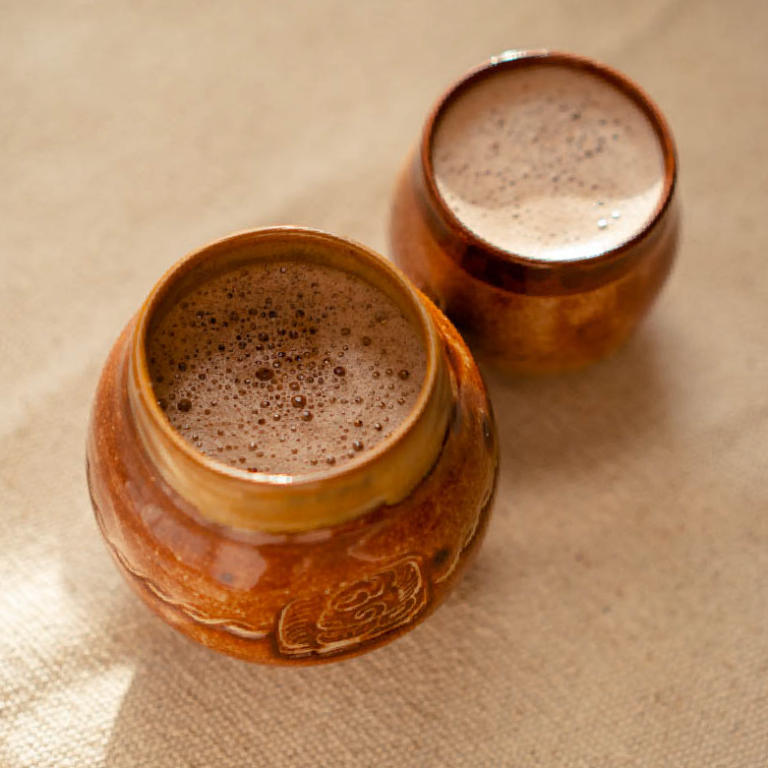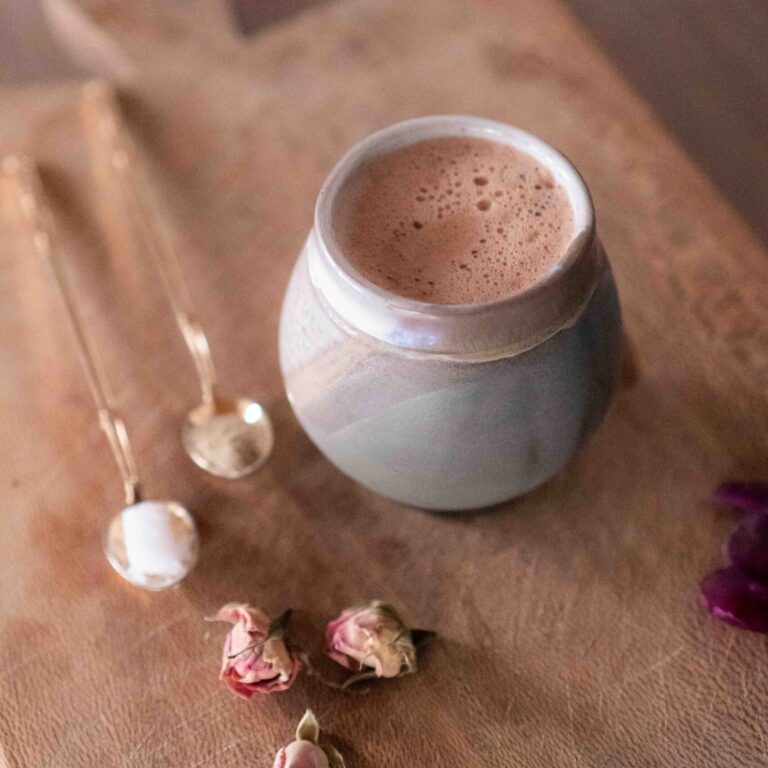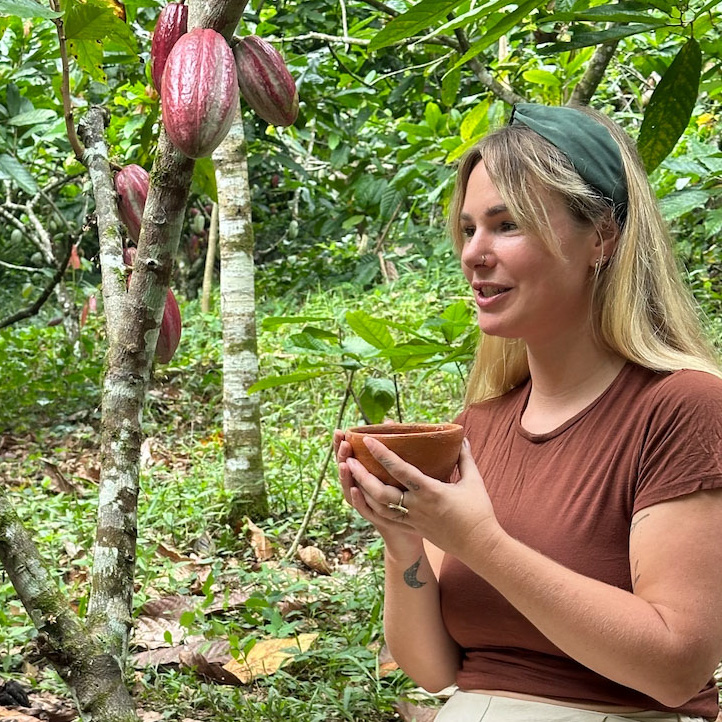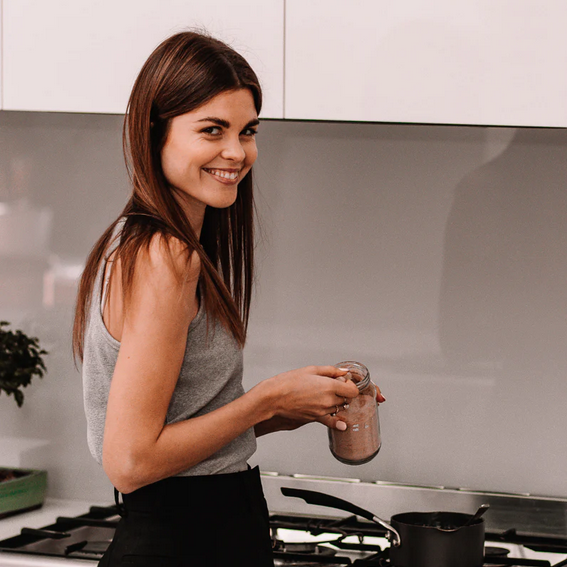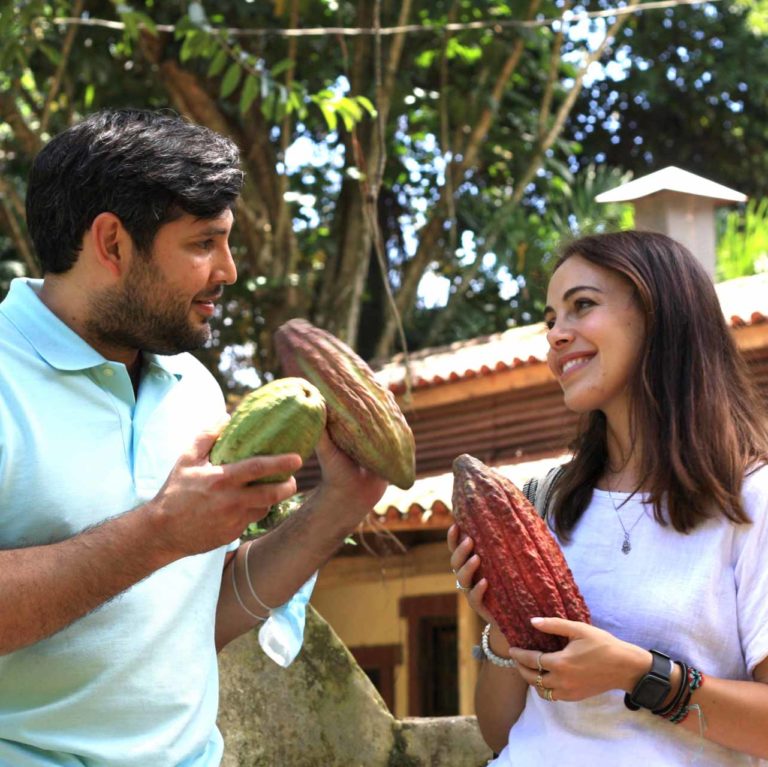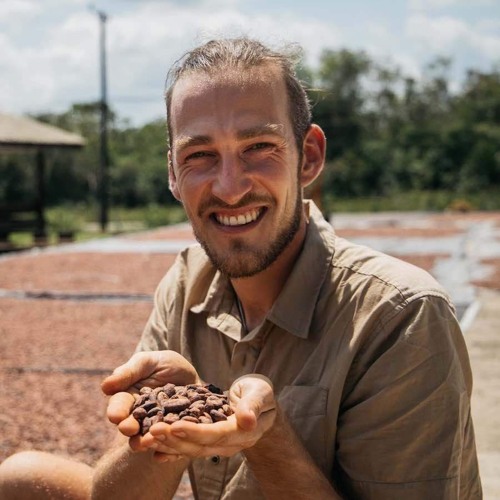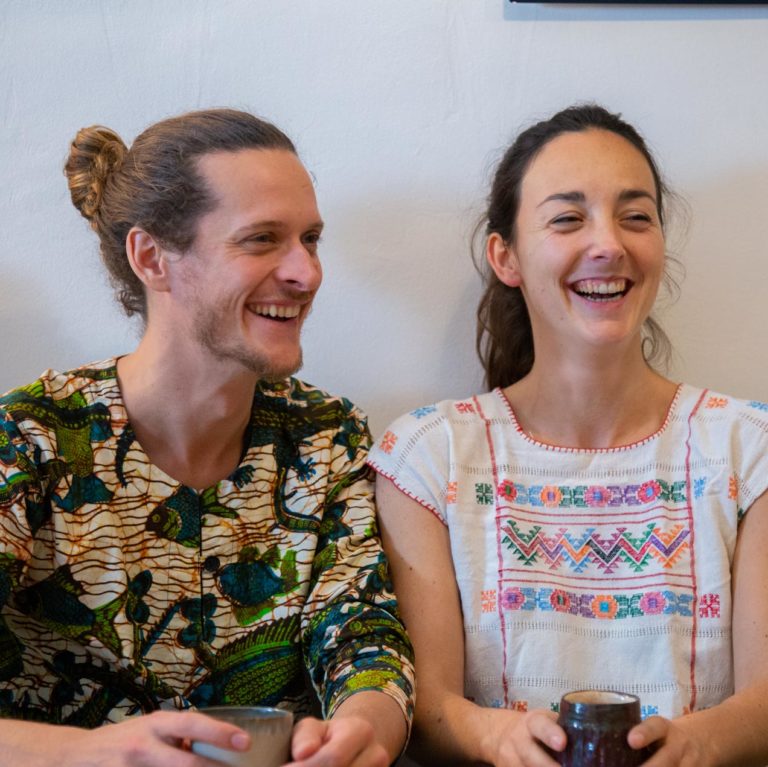What is ceremonial cacao?
— its origins, how it is made, and the benefits it procures
Cacao has traditionally been used for different purposes, consumed in various ways by numerous cultures. Giving a proper definition to what is now called « ceremonial cacao », which refers to its classic use, is then a complex matter. Instead, we’d like to make an introduction to it, keeping the discussion open about what it is, while mentioning precise facts that seem globally accepted as essentials by the community.
That being said, there are a few details we need to dive into in order to get a proper impression. First we’ll talk about its origins and heritage before focusing on its composition and making process. This will give us an insightful look on what ceremonial cacao really is.
It will then lead us to understand what « ceremonial » stands for, looking at the fine line where cacao sits, between nutritious food and potent plant-medicine.
Origins and heritage
There’s a lot to be said on that matter, and it will certainly be the subject of a forthcoming article. Yet it feels important for us to give insightful pieces of the context in which cacao developed, and what we must honor when we have a chance to drink it.
So far, research tells us that “cacao originated in South America, and was later introduced by man in Central America.”
— JC Motamayor
More specifically and according to this theory, theobroma cacao may originate from the Upper Amazon basin, somewhere between actual Peru, Ecuador and Colombia.
From there, it would’ve spread, probably through trade with the help of early Amerindians, accross the Andes and into Central America.
Different cultures and civilizations, like the Mayo-Chinchipe — the first culture to have left traces of the plant’s domestication and the consumption of cacao in the form a drink, 5300 years ago — the Olmecs, the Aztecs and the Mayas consumed and cherished cacao. They used its beans to prepare sacred drinks, among other things. They were fully aware of cacao’s richness and understood how it could represent a spiritual support, on top of being a potent source of nutrients.
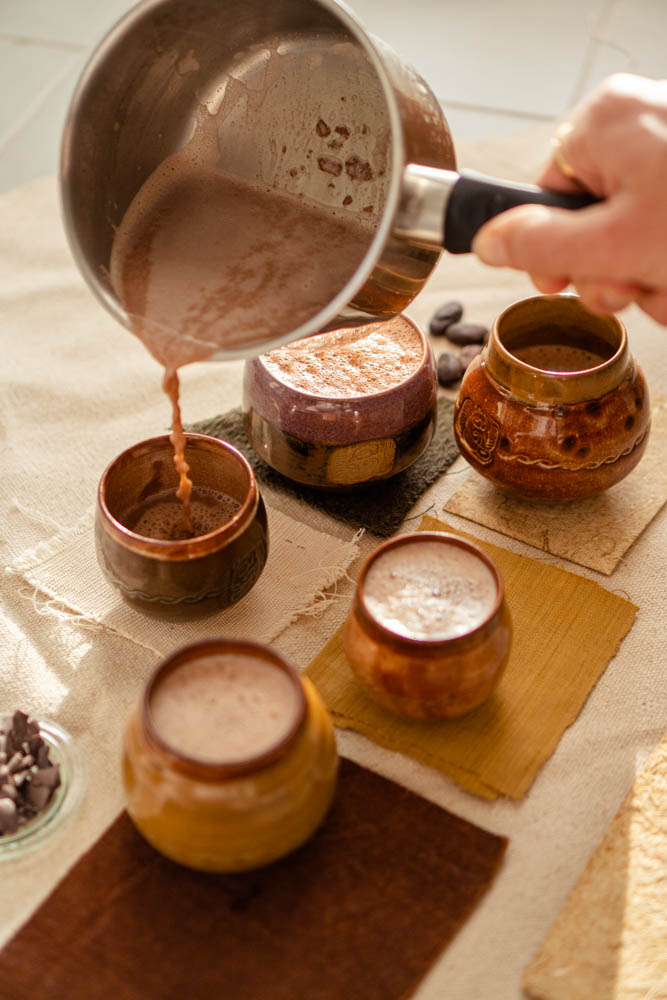
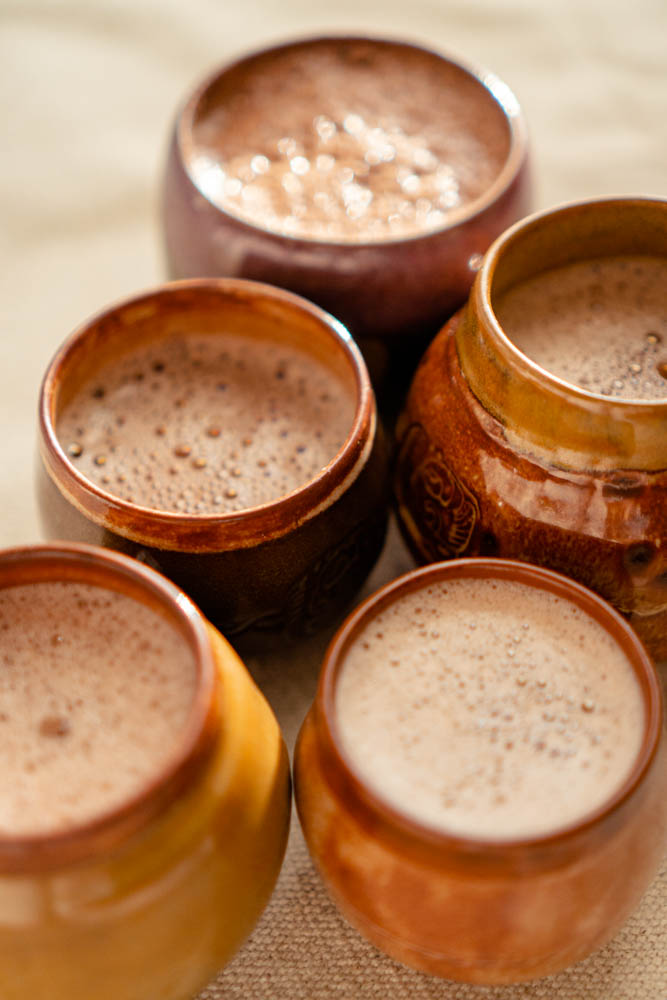
It is therefore important for us, when we have access to such cacao,
to remind ourselves that it’s been a long way. That it represents a complete piece of history and cultural heritage that should be acknowledged. That it was consumed with a purpose, and that it represents something greater than a drink itself.
« Ceremonial » cacao is then a cacao that embodies this heritage, originating from South and Central America, from family-owned farms, using traditional and artisanal techniques from cultivation to grinding.
Pure composition and minimalist making process
— Because confusion can be so easy, we have to get this straight
out of the way :
it has nothing to do with cacao powder or 100% dark chocolate.
There are different interesting reasons to it, and we’ll explain it thoroughly in a further dedicated article.
Once the cacao pods are harvested, which usually happens twice a year, they are cut open the same day and beans are extracted.
They come into a delicious white juicy flesh which flavor resembles of a mix between lychee and pineapple. A delicious fruit that still lives under the radar of most westerners’ palates.
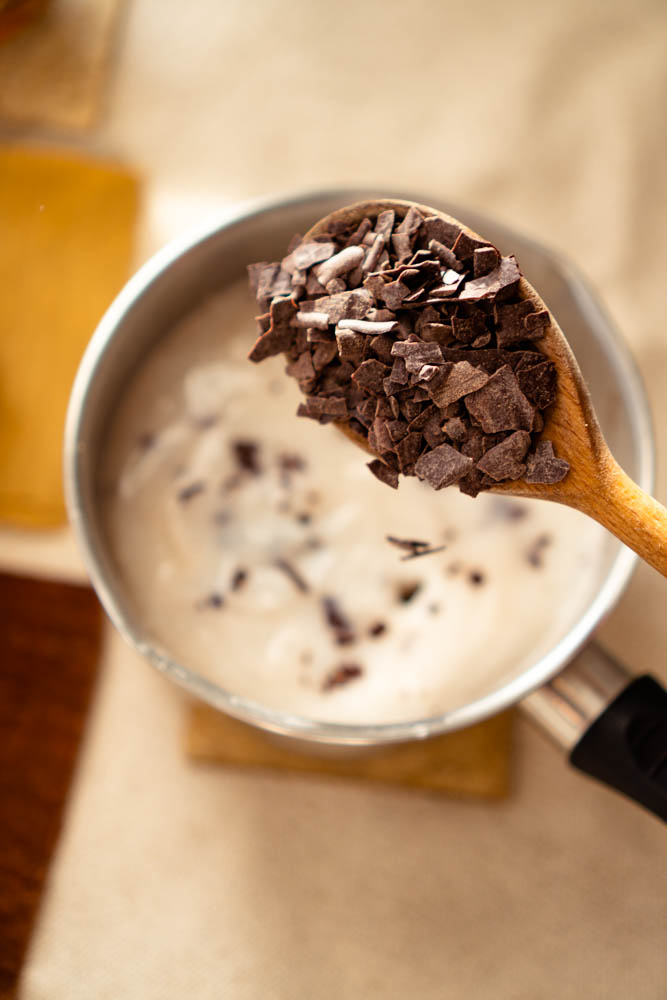

Fermentation and drying
This flesh is conserved around the beans because it will allow them to ferment, a very important stage of the process, as it :
– develops the most interesting aromas the beans are hiding,
– breaks down lectins, undesired and harmful compounds most of the seeds/beans contain, and is then a crucial step to make a bean edible.
Once properly fermented, they are dried, often spread out in the sun or on drying tables under roofs to protect them from bad weather and other potential intrants.
Roasting and crushing
From here, we enter the realm of traditional preparation, through the door of roasting.
Usually reserved to industrials or fine chocolate makers, this step is often done on-site, at the farm or cooperative, when it comes to ceremonial cacao.
The reason being that it is where the knowledge lies, inherited from hundreds of years in certain communities. Roasting has to be subtly performed to enhance the beans’ aromas and stabilize them, preventing them from rot, while keeping a low-enough temperature to preserve cacao’s nutrients and active-compounds, the ones that participate in making it « ceremonial grade ».
And we’re almost there, the beans just need to be cleaned and get their husks removed before being crushed into a paste.
Stone-grinding is the proper way to do it, as it’s the closest we can get from the handmade motion that used to be performed on a traditional metate.
This slow mechanical motion will prevent cacao from a rising friction heat, therefore preserving its valuable compounds.
Stone grinding also allows to keep cacao’s volatile flavor compounds inside the paste, therefore making the most of its aromas.
Cacao butter representing 40 to 60% of a bean’s weight (again depending on varieties), the paste texture comes to life on its own, and solidifies at room temperature
A nutritious food and potent plant-medicine
By studying the impact of cacao on our body, it is pretty straightforward to understand how it is connected to heart health, among other things.
Cacao is naturally rich in antioxydants — such as flavanols — and minerals, magnesium especially.
It is also packed with a mild stimulant, theobromine. As well as compounds that will trigger the secretion of mood-enhancing hormones such as dopamine, serotonine… Last but not least, cacao butter is preserved, which plays the role of vehicle to these compounds. Easily put, it makes them assimilable by our body.
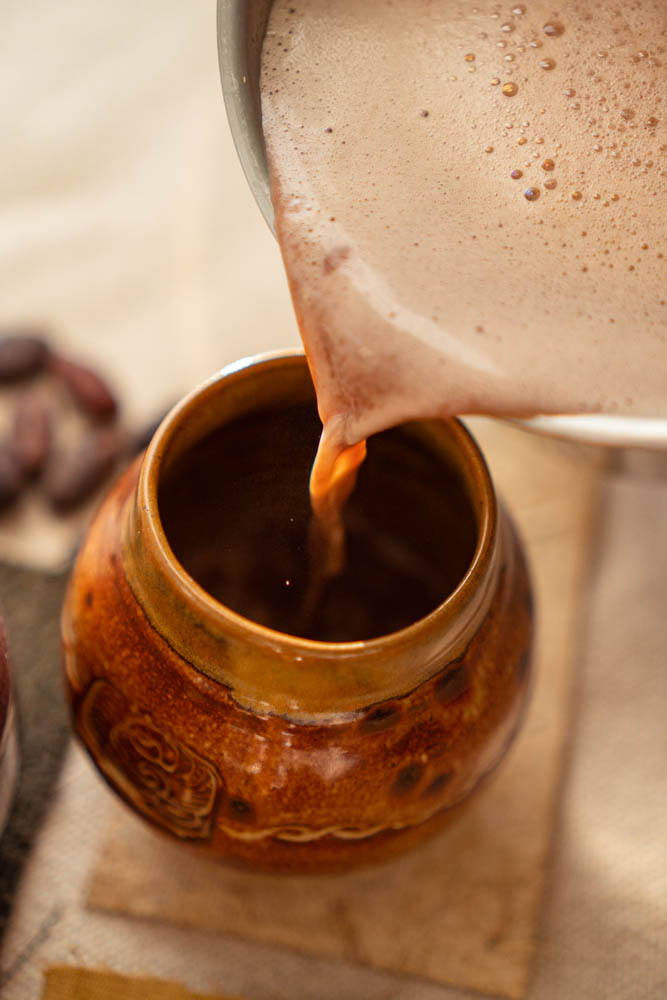
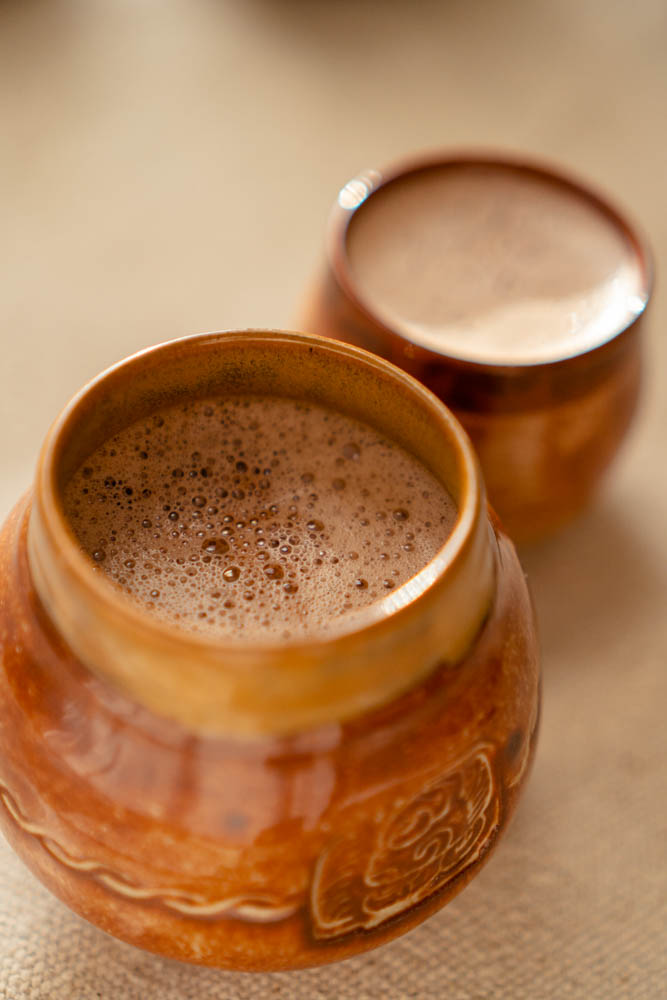
It is basically a well-balanced cocktail that is responsible for the appeasing yet engaging effect that is so typical to cacao. Something that we often describe as an uplifting and supporting energy. Which creates a bubble-like safe space, encouraging connection to oneself and to others.
Theobromine is a stimulant that acts on the cardiovascular system. It increases our heartbeat, our bloodflow, dilates our blood vessels, therefore conducts more oxygen in our body. It energizes the whole sustainably.
Combined to the secretion of a specific set of hormones, the effect rises after a few sips. This is when it often allows mental barreers to come down and to appreciate what’s there.
It is this entire synergy that is responsible for the effects that cacao provides and therefore for how it was and is still considered : as a potent plant-medicine that can support us in different contexts. Whether it is through a specific ceremony, a daily ritual, a meditative practice, a connection to self or to others.


